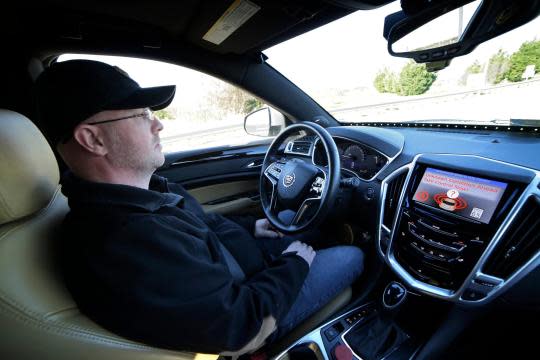California’s Red Tape Slows Google’s Self-Driving Roll

Hustling to bring cars that drive themselves to a road near you, Google finds itself somewhere that has frustrated many before: Waiting on the Department of Motor Vehicles.
The tech titan wants the freedom to give the public access to self-driving prototypes it has been testing on public roads since the summer. Before granting that permission, California regulators want Google to prove these cars of the future already drive as safely as people.
The Department of Motor Vehicles was supposed to write precedent-setting rules of the road by last Jan. 1. Nearly a year later, it is still struggling. After all, the agency is geared to administering driving tests and registering cars, not settling complicated questions the technology raises.
If the cars’ advanced sensors and computing power can drive better than humans, do they need a steering wheel and pedals? Would a person even need to be inside? Google says no on both.
Regulators don’t want to be blamed for unnecessarily stalling the arrival of robo-chauffeurs that can see farther, react faster and don’t text, speed or fall asleep. They’ve implored Google and traditional automakers also developing the technology to share safety data, but companies in competition don’t willingly reveal trade secrets.

Delay is not what Google had in mind when it pushed the 2012 legislation that made California one of the few states officially to authorize self-driving cars. Google’s hope was to trade the independence to innovate without government oversight for regulatory certainty.
Three years later, both a company that abhors bureaucracy and a DMV struggling to write rules beyond its expertise are exasperated.
While self-driving cars are not close to being widely available, Google hinted in 2014 it wanted to get self-driving cars into public hands as early as 2016, probably starting with employees outside its small corps of self-driving car experts.
More recently, the project’s leader, Chris Urmson, has said he doesn’t want his eldest son to need a driver’s license when he turns 16 in 3-½ years.
The bubble-shaped, two-seater prototype can’t go anywhere, any time. It is limited to places Google has surveyed in far greater detail than its online maps. It can’t handle fog or snow. Top speed: 25 mph.
Google’s 73 cars are among the 98 test vehicles that California’s DMV has given 10 companies permission to test publicly.
Though trained test drivers must sit behind the wheel, Google wants to remove the wheel and pedals for the general public. Its argument: It would be safer to take all control away than expect a person to snap safely to attention in an emergency.

 Yahoo Autos
Yahoo Autos